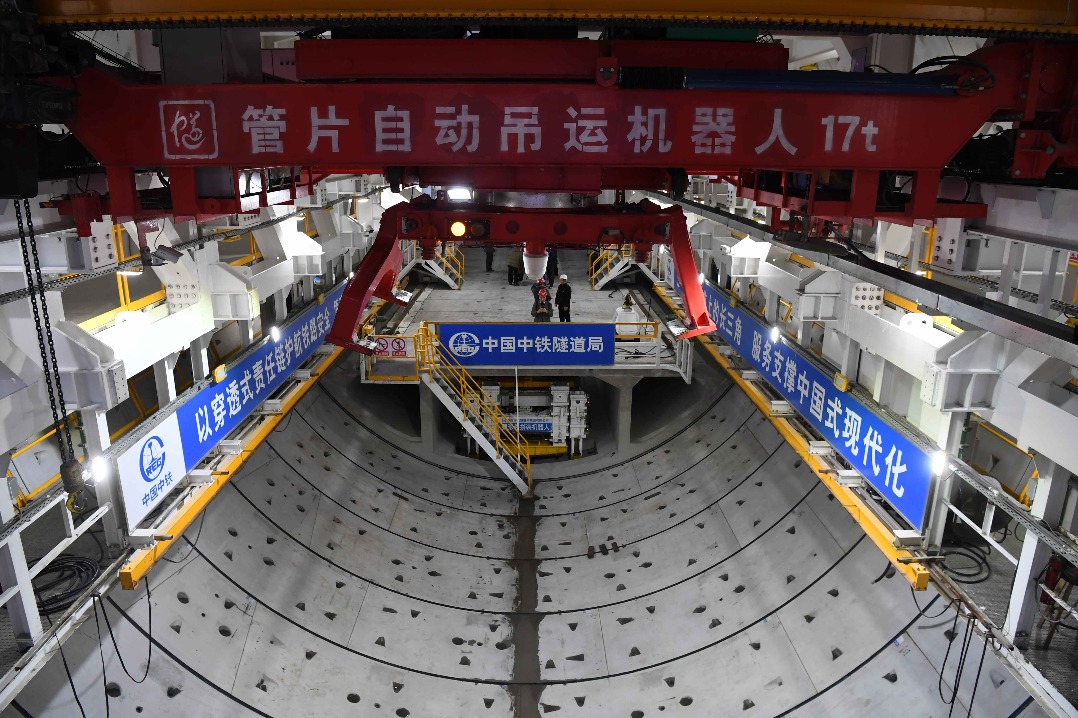How to survive climate disasters?


For relatively arid Shanxi province, located on the Loess Plateau in Central China, floods are a rare kind of natural disaster. But a few days ago Shanxi received record-breaking rainfall that triggered devastating floods and landslides, which destroyed about 19,000 houses and affected more than 1.75 million people, of whom over 120,000 had to be evacuated.
Frequent extreme weather events in China should especially prompt the local governments to strengthen their natural disaster-response systems. This year we have seen massive sandstorms engulfing Beijing, heatwaves scorching Guangzhou-aggravating the electricity shortage-and destructive downpours and floods battering Henan and Shanxi. For Henan, too, the record downpour that triggered the floods was surprising, because its average annual precipitation is only 600 millimeters.
To better respond to extreme weather events, it's important to first understand them and their causes. Our research in Beijing shows that the risk of extreme heat and rainfall has drastically increased in metropolises, as well as in third- and fourth-tier cities and small counties over the past six decades.
Under the RCP4.5 emission scenario mapped by the UN Intergovernmental Panel on Climate Change, if the average global temperature rise is between 2 C and 3 C by 2100, the average temperature increase in the Beijing-Tianjin-Hebei region would be 2.2-2.4 C, and summer could extend by 28 days. Also, the probability of extreme rainfall would increase by more than 25 percent in certain places in the Yangtze Delta and Pearl River Delta regions. In simple terms, RCP4.5 (or Representative Concentration Pathway 4.5) is a scenario that stabilizes radiative forcing at 4.5 Watts per meter squared in the year 2100 without exceeding that value any time in the rest of the 21st century.
With extreme weather events and natural disasters becoming increasingly frequent, it is time to invest in boosting the resilience and reducing the vulnerability of society, so as to mitigate the economic and social effects of climate risks.
Climate risks refer to the probability of damage to society and the natural system in case of a climate hazard. Climate risk is defined by hazardous weather events, and exposure and vulnerability. Exposure refers to the population, infrastructure and economy which are normally affected by extreme weather events. Vulnerability reflects to what extent communities are prepared to respond to disasters. And exposure and vulnerability are closely related to socioeconomic and ecological structures and status, including population density, the percentage of elderly people in a given population, adaptive infrastructure, availability of medical services, proportion of green space, and the preparedness of local governments.
Climate change-induced hazards often expose accumulated, systematic social problems. And poverty, inequality in distribution of public resources, and fragile urban ecosystems can amplify the impacts of climate risk.
In Shanxi, most of the cities and villages affected by the floods are in remote and less-developed areas, and the existing local disaster prevention infrastructure failed to prevent the floods. Also, since the majority of rural youths tend to seek better-paying jobs in large cities, those left in villages are mainly the elderly and children, who are especially vulnerable to extreme weather events.
Therefore, a systematic disaster response framework is needed to boost the resilience of cities and villages. It should integrate both infrastructure and non-physical risk management measures, such as the early warning system and humanitarian aid, as suggested in the Sendai Framework for Disaster Risk Reduction 2015-30.
Systematic disaster response requires preliminary climate risk assessment, with focus on hazards, exposure and vulnerability. The goal of risk assessment is to identify vulnerable communities before disaster strikes. Only then can risk alerts and emergency response meet their needs. And effective collaboration between departments, the meteorological bureau and urban planners, for example, will only be possible when there is a clear understanding of where their responsibilities overlap.
Moreover, while non-physical social structures-such as public awareness, education and governance-play an important role in improving climate change adaptation capability, making the public more aware of climate risks can prompt individuals to take additional safety measures for themselves and their community.
The views don't necessarily reflect those of China Daily.


If you have a specific expertise, or would like to share your thought about our stories, then send us your writings at opinion@chinadaily.com.cn, and comment@chinadaily.com.cn.

































